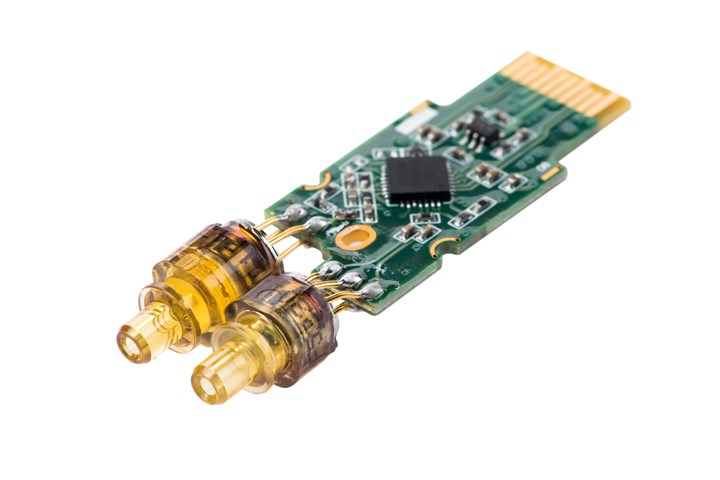PEI for Optical Transceiver Collimator Lenses for Fiber Optic Systems
SABIC’S Ultem 3310TD boasts a significantly lower coefficient of thermal expansion.

A new polyetherimide (PEI) resin from SABIC is said to deliver a significantly lower coefficient of thermal expansion (CTE) that that of standard Ultem PEI grades. As such, Ultem 3310TD is well suited for optical transceiver collimator lenses used in single-mode fiber optic systems.
A low CTE is essential to optimize the dimensional stability of the collimator lenses and ensure alignment with single-mode fibers. Furthermore, the new grade provides near-infrared (IR) transmission without degrading signal quality. As a potential replacement for glass, Ultem3310TD is said to offer the efficiency of high-volume micro-molding, avoids the need for costly secondary operations, expands design freedom and lowers part weight.
As datacenters handle larger data volumes that generate more heat, temperature fluctuations can cause expansion and shrinkage in optical lenses. Dimensionally stable lens materials are needed to avoid misalignment with the fiber, which can lead to signal loss or distortion. This challenge is more critical with single-mode fiber than multi-mode fiber, due to the difference in core diameter (8-9 μm vs. 50-62.5 μm, respectively). Collimation in the smaller light bundles of single-mode fiber is highly sensitive to misalignment, with less tolerance for heat-induced dimensional changes.
Ultem 3310TD resin has a CTE of ~38 ppm/C, a reduction of 30% compared to the CTE of Ultem 1010 resin, which is widely used in multi-mode optical transceiver lenses. The new material’s CTE, while not as low as that of glass, expands the implementation opportunities for thermoplastics in single-mode fiber optics. This PEI resin also offers several advantages over glass, including the ability to be micro-molded into a wide variety of shapes without the time-consuming secondary grinding and polishing required for aspherical glass lenses. As a thermoplastic, this resin helps enable complex part designs, like free-form optics and multi-channel lens arrays, which may be difficult to achieve with glass. It also helps to achieve easy integration of mechanical and optical components such as alignment fixtures.
For customers that use Ultem1010 resin for multi-mode fiber optic lenses, choosing Ultem 3310TD resin instead of glass for single-mode optics provides continuity in processing and simplifies the supply chain. The two grades complement each other, offering a complete solution for single-mode and multi-mode applications.
In addition to optical transceiver lenses, Ultem 3310TD resin can potentially be used in other telecommunications applications such as optical modems and optical cables. Also, it can be considered for components in other industries that call for a low CTE and good IR transmission, such as LiDAR sensors (automotive), drones (electronics) and robots (industrial).
Related Content
-
Prices Up for All Volume Resins
First quarter was ending up with upward pricing, primarily due to higher feedstock costs and not supply/demand fundamentals.
-
The Fantasy and Reality of Raw Material Shelf Life: Part 1
Is a two-year-old hygroscopic resin kept in its original packaging still useful? Let’s try to answer that question and clear up some misconceptions.
-
NPE2024 Materials: Spotlight on Sustainability with Performance
Across the show, sustainability ruled in new materials technology, from polyolefins and engineering resins to biobased materials.














